Foot and mouth disease lesions
OIE has recently declared a foot and mouth disease (FMD) outbreak in Morocco. It is thus necessary to remain alert to the possible appearance of FMD lesions at the slaughterhouses. In this post a few FMD lesions are reviewed.
Cattle are the species with the most conspicuous lesions, the disease, however, can involve any cloven-hoofed animals (cattle, buffalo, sheep, goats, pigs...). Suspected lesions must be compulsory reported to the authorities.
Table 1: Typical FMD lesions.
| Typical FMD lesions | Antemortem changes | |
| Bovine | Sores and blisters in the oral mucosa, the tongue and the feet. | Fever
Shivering Lameness Slobbering |
| Ovine | Sheep rarely develop mouth blisters as a result of foot and mouth disease: lameness is the main sign of the disease.
Blisters on the hoof are more common. In either location the blisters tend to be very small and hard to spot. |
Lameness |
| Porcine | Pigs rarely develop mouth blisters as a result of foot and mouth disease: lameness is the main sign of the disease.
When blisters appear they can be found at the upper edge of the hoof where the skin and horn meet, on the tongue and on the snout. The lesions are indistinguishable from swine vesicular disease. |
Lameness
Pain and apathy |
For more information check the DEFRA & APHA website.
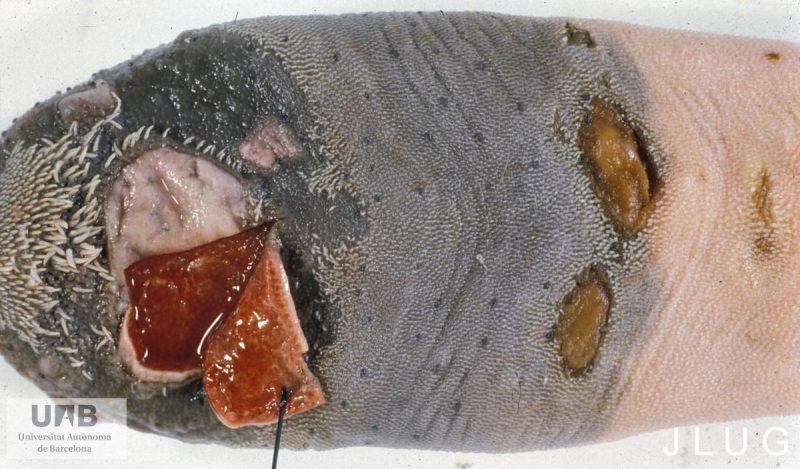
Ulcers and blisters in the tongue of a cow (ulcerative glositis).
Credit: Veterinary Pathology Image Database. UAB-JLUG
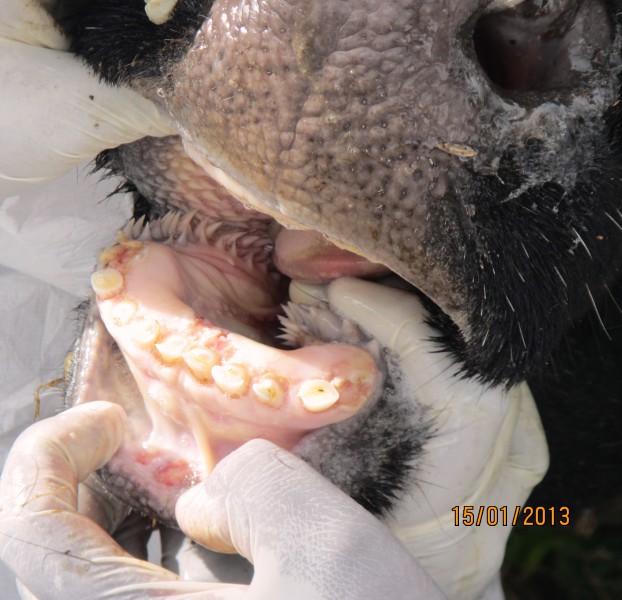
Bovine, gum ulcerative lesions. Credit: FAO.
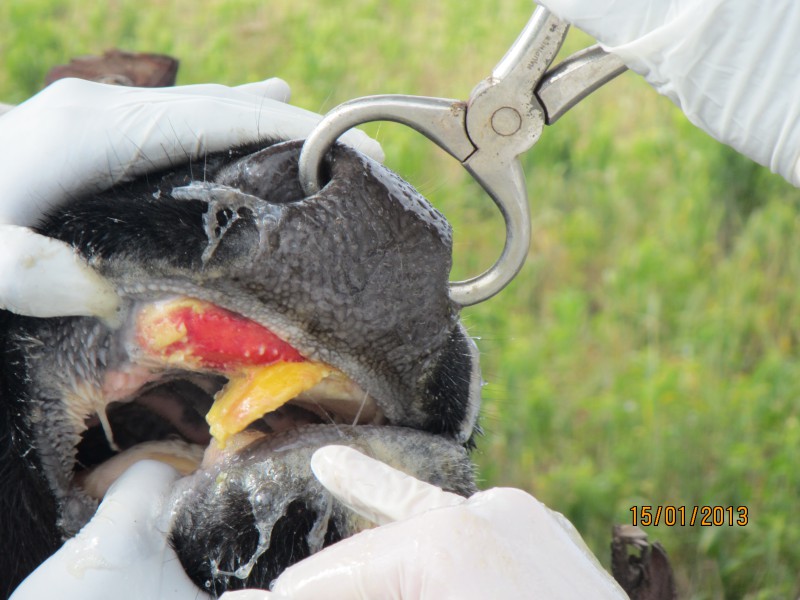
Bovine, gum ulcerative lesions. Credit: FAO.
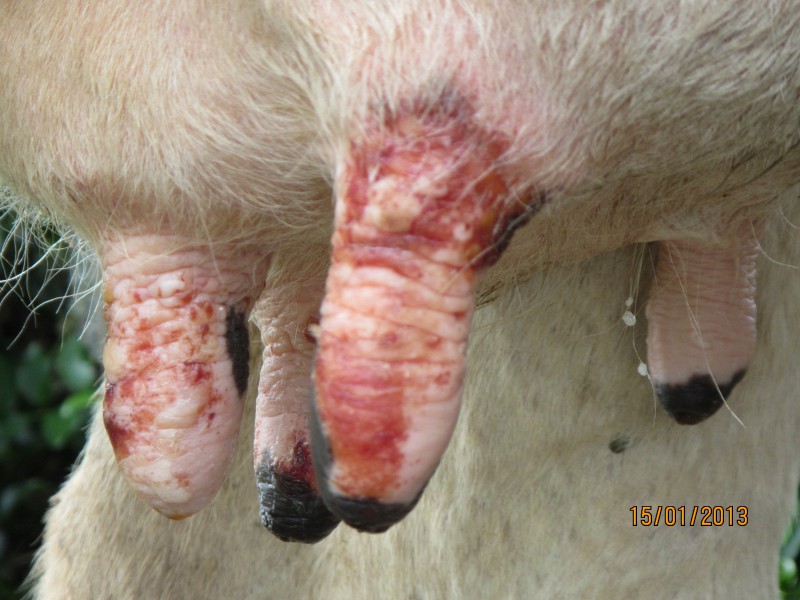
Bovine, nipple lesions. Credit: FAO.
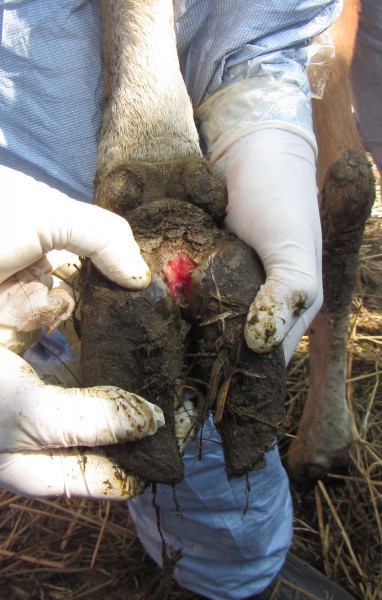
Bovine, feet lesions. Credit: FAO.
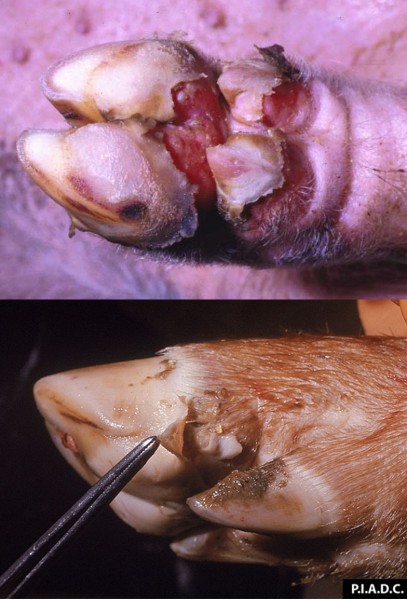
Porcine, feet lesions: broken blisters at the edge of the hoof. Credit: CFSPH-Dr. D. Gregg, Noah's Arkive, PIADC
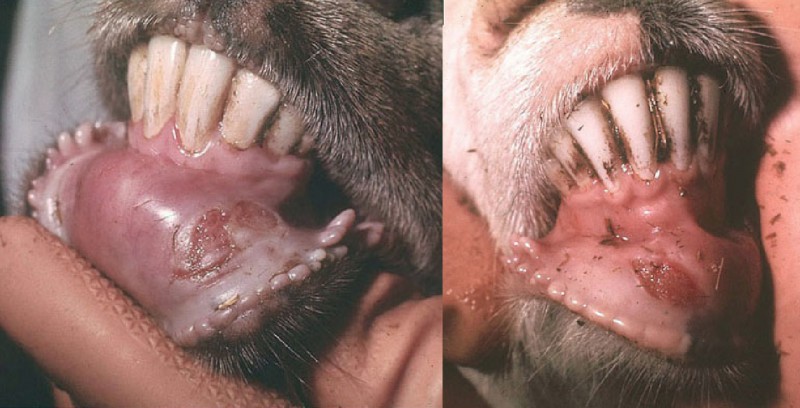
Caprine, oral mucosa ulcerative lesions. Credit: CFSPH-PIADC


2 comment(s)
Comment form the Veterianry Pathology Group in LinkedIN:
By Dr.Periasamy,M.V.Sc. Natesapillai
Hi, How can we differentiate FMD and Bovine Vesicular Disease clinically and by Post Mortem ?
FMD and bovine vesicular stomatitis are also clinically indistinguishable. In case of a suspected case viral detection from the vesicles (PCR) must be performed to differentiate both viruses.
ELISA is also an option but some animals may not have produced an antibody response.